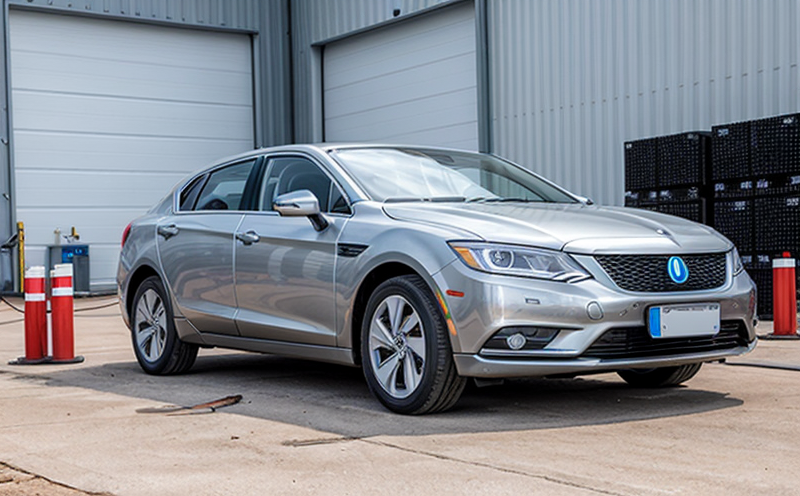IEC 61982 NiMH Battery System Testing for Electric Road Vehicles
The International Electrotechnical Commission's (IEC) IEC 61982 standard is specifically designed to ensure the safety, performance, and reliability of Nickel-Metal Hydride (NiMH) battery systems used in electric road vehicles. This service focuses on testing these batteries according to IEC 61982, which covers a wide range of parameters that are critical for the safe operation of NiMH batteries in automotive applications.
NiMH batteries have been widely adopted due to their high energy density and low self-discharge rate compared to other types of rechargeable cells. However, to ensure they meet the stringent requirements set by IEC 61982, comprehensive testing is necessary. This includes structural integrity checks, electrical performance assessments, thermal management evaluations, and more.
The first step in the process involves thorough specimen preparation. This includes ensuring that each battery cell or system undergoes rigorous cleaning procedures to remove any contaminants that could affect test results. Once prepared, batteries are subjected to a series of tests aimed at assessing their capacity retention over time, cycle life under various conditions, and resistance to thermal stress.
Thermal cycling is one crucial aspect where IEC 61982 plays a vital role. During this phase, the battery is exposed to extreme temperatures ranging from sub-zero degrees Celsius up to around 50°C. This helps determine how well the battery can withstand temperature fluctuations without compromising its structural integrity or electrical performance.
Another important parameter tested under IEC 61982 is internal resistance measurement. High internal resistance can indicate issues within the battery, such as poor connections between electrodes or impurities inside the cell. By measuring this value at different stages of the battery's lifecycle, we can identify potential problems early on and take corrective actions if needed.
Furthermore, safety features like overcharge protection circuits must also be evaluated meticulously. These safeguards prevent damage to the battery by cutting off charging when it reaches full charge levels. Ensuring these protections function correctly is essential for preventing fires or other hazardous situations during vehicle operation.
In addition to electrical and thermal performance tests, mechanical stress testing may also form part of the overall evaluation process. This ensures that even if there are external forces acting upon the battery while installed in a moving vehicle, it remains robust enough not to fail catastrophically.
Once all these tests have been completed successfully, detailed reports summarizing each test result will be compiled and presented to our clients. These documents provide comprehensive insights into how well your NiMH batteries adhere to IEC 61982 standards and what improvements might be necessary going forward.
The importance of adhering strictly to such stringent specifications cannot be overstated given the growing demand for sustainable transportation solutions powered by renewable energy sources like solar power. By ensuring compliance with international standards through rigorous testing protocols, manufacturers can enhance trust in their products among consumers who prioritize environmental responsibility.
Why It Matters
The reliability and safety of NiMH batteries are paramount considerations for electric road vehicles operating on public roads. Non-compliance with IEC 61982 could lead to malfunctions, reduced lifespan, or even dangerous incidents involving these high-capacity energy storage units.
- Enhanced Safety: Adherence to international standards ensures that all components of the battery system work harmoniously without causing unintended risks.
- Increased Efficiency: Proper testing helps optimize performance metrics such as voltage consistency, which directly impacts vehicle range and charging speeds.
- Prolonged Lifespan: By identifying weak points early on via thorough inspections, manufacturers can extend the useful life of their products significantly.
In summary, implementing IEC 61982 not only meets regulatory requirements but also contributes positively towards building safer and more efficient electric vehicles. This aligns perfectly with global efforts to promote cleaner transportation options while reducing greenhouse gas emissions from fossil fuel consumption.
Quality and Reliability Assurance
Our commitment to quality extends beyond just conducting tests; it encompasses ensuring that every step in the process adheres meticulously to established guidelines. Our team of experienced engineers employs state-of-the-art equipment calibrated according to IEC specifications, guaranteeing accurate measurements across all parameters.
To maintain consistency throughout the testing procedure, we employ rigorous quality control measures at various stages. From initial inspections right through final analysis, each phase is documented thoroughly for future reference should discrepancies arise during review processes.
Moreover, our laboratory maintains accreditation from reputable bodies that recognize our proficiency in performing these specialized tests. This certification adds credibility to our findings and enhances confidence among stakeholders involved in the development of electric vehicles powered by NiMH batteries.
Customer Impact and Satisfaction
- Enhanced Reputation: Meeting regulatory requirements boosts brand image, making us a preferred choice for customers seeking reliable suppliers.
- Informed Decisions: Armed with detailed reports, clients can make informed decisions about product improvements or new development initiatives based on empirical data rather than speculation.
- Cost Savings: Early identification of issues through comprehensive testing reduces costs associated with potential recalls later down the line.
In summary, our services contribute significantly to enhancing customer satisfaction by delivering high-quality results that meet or exceed expectations set forth in IEC 61982. This ultimately leads to increased market share and loyalty among our valued clients.





